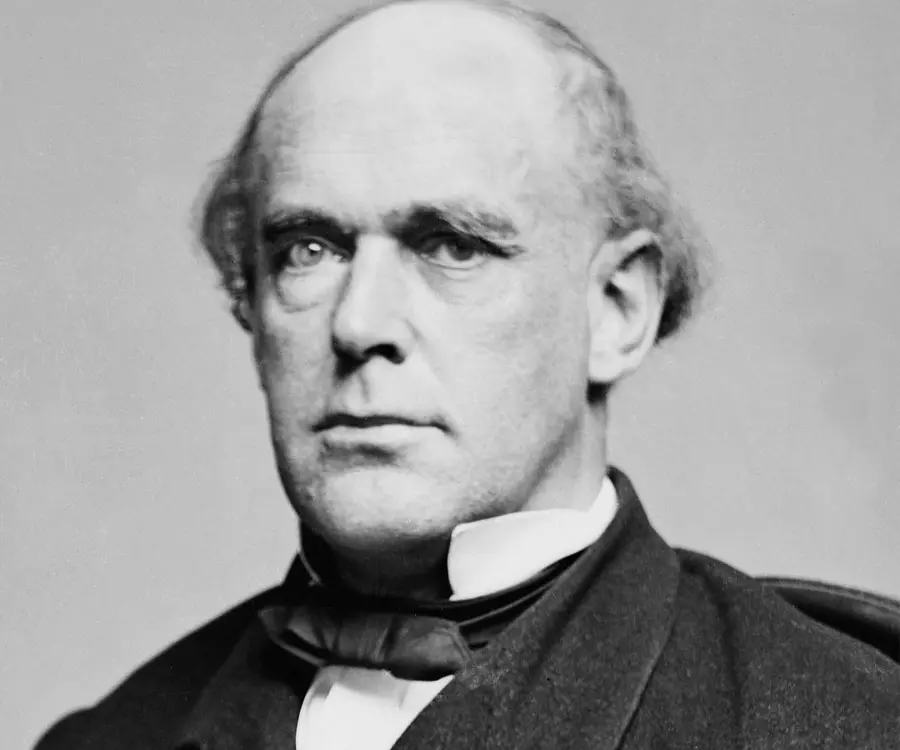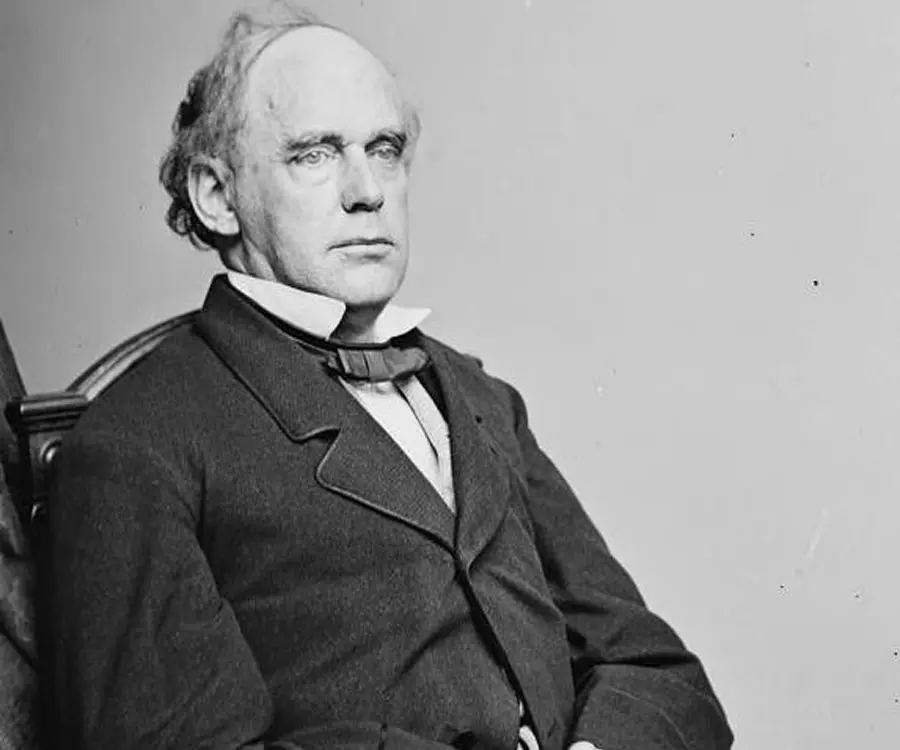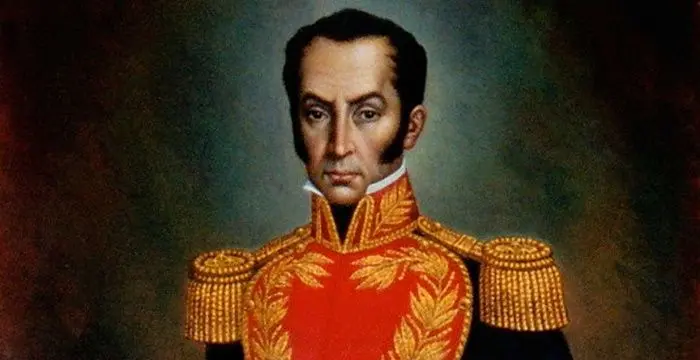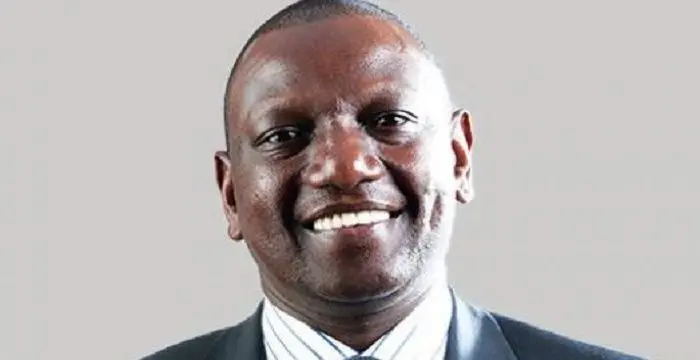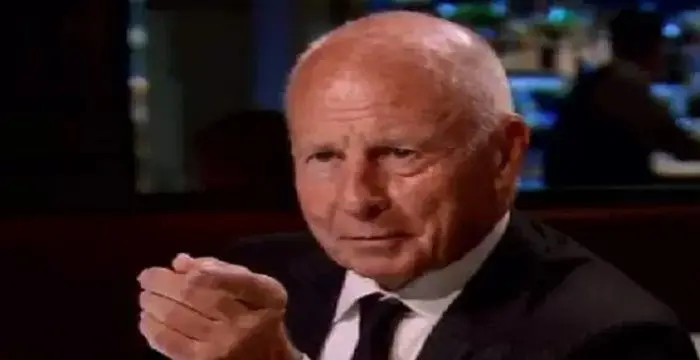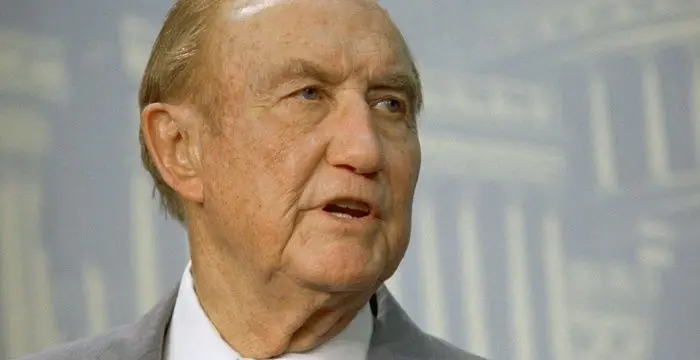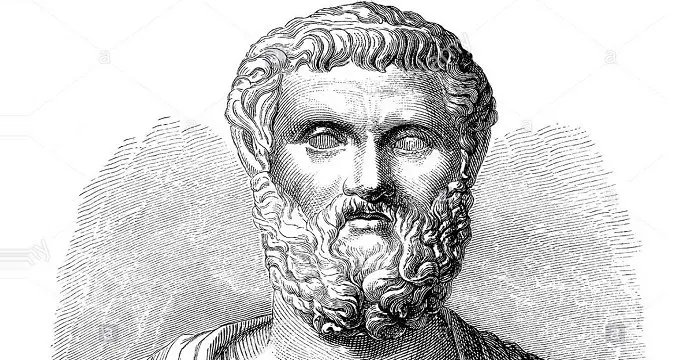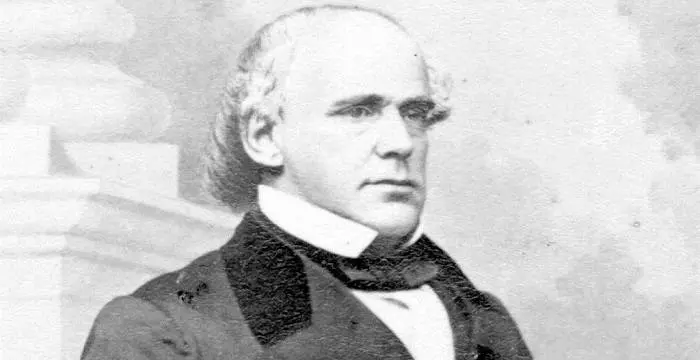
Salmon P. Chase - Sixth Chief Justice of the United States, Timeline and Family
Salmon P. Chase's Personal Details
Salmon Portland Chase was an American jurist and politician and served as the sixth Chief Justice of the United States
| Information | Detail |
|---|---|
| Birthday | January 13, 1808 |
| Died on | May 7, 1873 |
| Nationality | American |
| Famous | Republicans, Lawyers & Judges, Political Leaders, Sixth Chief Justice of the United States |
| Ideologies | Republicans |
| Spouses | Catherine Garniss, Eliza Smith, Sarah Bella Dunlap Ludlow |
| Known as | Salmon Portland Chase |
| Birth Place | sixth Chief Justice of the United States |
| Gender | Male |
| Father | Ithamar Chase |
| Mother | Janet Ralston |
| Sun Sign | Capricorn |
| Born in | sixth Chief Justice of the United States |
| Famous as | Sixth Chief Justice of the United States |
| Died at Age | 65 |
Salmon P. Chase's photo
Who is Salmon P. Chase?
Salmon Portland Chase was an American jurist and politician. He served as the twenty-fifth Secretary of the Treasury of the United States under Abraham Lincoln. During his tenure as Secretary of Treasury he effectuated the National Banking Act. He was instrumental in setting up a national bank and also introduced paper currency for the first time thus empowering the federal government. He was the sixth Chief Justice of the United States and served as the twenty-third Governor of Ohio. He was a strict abolitionist whose early career saw him as a lawyer who frequently defended fugitive blacks and was even tagged as “the attorney general for fugitive slaves”. Formerly a Whig, he aided in forming anti-slavery ‘Liberty Party’ and remained one of its leaders. He was involved in different reform activities including anti-slavery movements. After the Mexican War he helped in forming the ‘Free Soil Party’ and coined the slogan "Free Soil, Free Labor, Free Men" for it. He also served as a U.S. Senator from Ohio during his term he protested measures like the Kansas-Nebraska Act and the Compromise of 1850 as these could deter liberty and freedom. The manifesto ‘Appeal of the Independent Democrats’ written by him and Joshua Giddings and signed by eminent politicians of America was a classic articulation of protest against expansion of slavery.
// Famous Republicans
Simon Bolivar
Simón Bolívar was a Venezuelan military leader who was instrumental in independence of several Latin American countries from the Spanish rule. This biography profiles his childhood, life, achievements and timeline.
Nizar Qabbani
Nizar Qabbani was a poet, and is one among the most honoured men in the Arab Literary world. This biography provides detailed information about his childhood, career, profile and timeline.
William Ruto
William Ruto is a politician who hails from Kenya and is the first Deputy President of the Republic of Kenya. This biography provides detailed information about his childhood, Profile, career and timeline
Childhood & Early Life
Salmon Portland Chase was born in January 13, 1808, to Ithamar Chase and Janet Ralston in Cornish, New Hamsphire.
In 1817, Salmon’s father died leaving his wife and ten children with little resources.
He received his primary education at a school in Windsor, Vermont and thereafter at a school in Worthington, Ohio.
During 1820 to 1824, he stayed in Ohio with his uncle Bishop Philander Chase who was a prominent figure in the Protestant Episcopal Church. His other uncle Dudley Chase was a U.S. Senator from Vermont.
In 1822, he joined the Cincinnati College. He later enrolled in Dartmouth College and graduated from the same in 1826. While in Dartmouth he worked as a teacher at the ‘Royalton Academy’ in Royalton, Vermont.
He moved to Washington, D.C. and worked as a school headmaster and studied law under the guidance of U.S. Attorney General William Wirt. In 1829, he was admitted to the bar.
Career
In 1830, he moved to Cincinnati to begin legal practice. In no time he became a prominent figure in the Cincinnati bar as an abolitionist lawyer. He published a version of laws of Ohio with annotations which became a standard for a long time.
His early career saw him working with the ‘American Sunday School Union’ as a lawyer who frequently defended fugitive slaves.
During the Cincinnati Riots (1836) several events including assault of Games G. Birney’s press had deep impact on him following which he got associated with the anti-slavery movements.
In the case of ‘Jones v. Van Zandt’ held in the U.S. Supreme Court, he drew much attention for his argument on constitutionality of laws related to fugitive slaves. He insisted that the Constitution does not empower the federal government to establish slavery in any place. He contested that a man ceases to be a slave of a state, once he leaves the state’s jurisdiction.
In 1840, he was elected to the Cincinnati City Council as a member of Whig party. The very next year he left the Whig party.
He helped in the formation of the ‘Liberty Party’ and remained its leader in Ohio for seven years. In 1843, he drafted the national Liberty platform and in 1845 he prepared the Liberty address.
As a leader of the ‘Liberty Party’ he made efforts to unite the party with ‘Van Buren Democrats’ or the ‘Barnburners’ to create the ‘Free Soil Party’.
The Free-Soil platform was drafted by him. In 1848, he was instrumental in Van Buren’s nomination for the position of President.
He became a U.S. Senator from Ohio on March 4, 1849 under the membership of Free Soil. During his tenure as a Senator till March 3, 1855, he advocated anti-slavery movements and aimed at putting pressure so that the Northern Democrats oppose slavery expansion.
He opposed measures like the Kansas-Nebraska Act and the Compromise of 1850 which could deter liberty and freedom.
His effort to unite the collapsing Whig Party with the anti-slavery Democrats led to the formation of the ‘Republic Party’.
One of the initial manifestos of the ‘Republic Party’, ‘The Appeal of the Independent Democrats in Congress to the People of the United States’ published on January 24, 1854, was written by him and Joshua Giddings.
In 1855, he became the first Republican governor of Ohio. His tenure as governor (from January 14, 1856 to January 9, 1860) saw him advocating for prison reform, public education and rights for women.
In 1860, he looked for a Republican presidential nomination. Since he was against a ‘protective tariff’ approved by many Republicans and also his collaboration with the Democrats did not go well with the Republicans who formerly belonged to Whigs, he could not garner much support. He lost to Abraham Lincoln at the 1860 Republican National Convention.
He became a U.S. Senator on the ticket of the ‘Republic Party’ on March 4, 1861, but resigned after three days to serve as the ‘Secretary of the Treasury’ under President Abraham Lincoln. His tenure as the ‘Secretary of the Treasury’ was from March 7, 1861 to June 30, 1864.
In 1861, he participated as a member of the ‘Peace Convention’ at the Washington, D.C.
Salmon Portland Chase was given the responsibility to design the greenback demand note, the first federal currency notes of the U.S. Many of the paper currencies bore his picture.
In 1864, he was efficacious in inducting the phrase ‘In God We Trust’ on the U.S. coins.
In October 1864, Abraham Lincoln suggested Chase’s name as probable Chief Justice of the Supreme Court after the death of Chief Justice Roger B. Taney. Chase’s nomination was issued by Lincoln on December 6, 1864. The Senate confirmed his name on that very day. He served as Chief Justice from December 6, 1864 till his death. As the Chief Justice he admitted attorney John Rock of African-American origin, contrary to pro-slavery Roger B. Taney.
In 1868, he presided as Chief Justice at the impeachment trial of President Andrew Johnson. The same year he failed to secure Democratic presidential nomination.
In 1871, he endorsed Clement Vallandigham’s (Leader of ‘Ohio Democratic Party’) ‘New Departure’ policy.
In 1872, he aided in founding the ‘Liberal Republican Party’ and was unsuccessful to bid for its presidential nomination.
Major Works
During his tenure as ‘Secretary of Treasury’ when the Civil War was in full swing, he effectuated the National Banking Act. He was instrumental in setting up a national bank and also introduced paper currency.
The changes in the American financial policy ensured a market for government bonds that could be used in aiding war effort. In 1862, he along with ‘Jay Cooke & Company’ managed to sell government war bonds worth $500 million. He set up the ‘Bureau of Internal Revenue’ to collect taxes. It was later called the ‘Internal Revenue Service’.
Personal Life & Legacy
In 1834, Salmon Portland Chase married Catherine Garniss. While giving birth to their first child, Catherine died in 1835. After her death he became more spiritual and involved himself in different abolition movements.
He was an active member of the Cincinnati based ‘St. Paul Episcopal Cathedral’.
In 1839, he married Eliza Smith and the couple had three children. She died in 1845 due to tuberculosis.
In 1846, he married Sarah Bella Dunlap Ludlow. She died on January 13, 1852.
He had many children but only two of them survived to adulthood.
On May 7, 1873 he died after suffering a stroke in the New York City. He was first buried in the ‘Oak Hill Cemetery’ in Washington, D.C. His final resting place is ‘Spring Grove Cemetery’ in Cincinnati, Ohio.
Trivia
The ‘Chase National Bank’ set-up on September 12, 1877, was named after him. The bank later merged with the ‘Bank of the Manhattan Company’ to become the ‘Chase Manhattan Bank’. The ‘Chase Manhattan Bank’ again merged with ‘JPMorgan & Co.’ and is presently known as the ‘JP Morgan Chase’.
In 1975 his birthplace was declared a National Historic Landmark.
The largest denomination of the American currency, the United States $10,000 bill, contains his picture.
Many places and institutions including Chase City, Virginia, ‘Salmon P. Chase College of Law’ at the ‘Northern Kentucky University’ and ‘Chase Hall’ at ‘Harvard Business School’ were named after him.
// Famous Lawyers & Judges
Sunny Hostin
Sunny Hostin is an American lawyer, social commentator, columnist and journalist. Check out this biography to know about her childhood, family life, achievements and fun facts about her.
Thomas Girardi
Thomas Girardi is an American attorney who co-founded the law firm, Girardi & Keese. Check out this biography to know about his childhood, family life, achievements and fun facts about him.
Jerry Sheindlin
Jerry Sheindlin is an American judge, author, and television personality. Check out this biography to know about his childhood, family life, achievements and fun facts about him.
Salmon P. Chase biography timelines
- // 13th Jan 1808Salmon Portland Chase was born in January 13, 1808, to Ithamar Chase and Janet Ralston in Cornish, New Hamsphire.
- // 1817In 1817, Salmon’s father died leaving his wife and ten children with little resources.
- // 1820 To 1824During 1820 to 1824, he stayed in Ohio with his uncle Bishop Philander Chase who was a prominent figure in the Protestant Episcopal Church. His other uncle Dudley Chase was a U.S. Senator from Vermont.
- // 1822 To 1826In 1822, he joined the Cincinnati College. He later enrolled in Dartmouth College and graduated from the same in 1826. While in Dartmouth he worked as a teacher at the ‘Royalton Academy’ in Royalton, Vermont.
- // 1829He moved to Washington, D.C. and worked as a school headmaster and studied law under the guidance of U.S. Attorney General William Wirt. In 1829, he was admitted to the bar.
- // 1830In 1830, he moved to Cincinnati to begin legal practice. In no time he became a prominent figure in the Cincinnati bar as an abolitionist lawyer. He published a version of laws of Ohio with annotations which became a standard for a long time.
- // 1834 To 1835In 1834, Salmon Portland Chase married Catherine Garniss. While giving birth to their first child, Catherine died in 1835. After her death he became more spiritual and involved himself in different abolition movements.
- // 1836During the Cincinnati Riots (1836) several events including assault of Games G. Birney’s press had deep impact on him following which he got associated with the anti-slavery movements.
- // 1839 To 1845In 1839, he married Eliza Smith and the couple had three children. She died in 1845 due to tuberculosis.
- // 1840In 1840, he was elected to the Cincinnati City Council as a member of Whig party. The very next year he left the Whig party.
- // 1843 To 1845He helped in the formation of the ‘Liberty Party’ and remained its leader in Ohio for seven years. In 1843, he drafted the national Liberty platform and in 1845 he prepared the Liberty address.
- // 1846 To 13th Jan 1852In 1846, he married Sarah Bella Dunlap Ludlow. She died on January 13, 1852.
- // 1848The Free-Soil platform was drafted by him. In 1848, he was instrumental in Van Buren’s nomination for the position of President.
- // 4th Mar 1849 To 3rd Mar 1855He became a U.S. Senator from Ohio on March 4, 1849 under the membership of Free Soil. During his tenure as a Senator till March 3, 1855, he advocated anti-slavery movements and aimed at putting pressure so that the Northern Democrats oppose slavery expansion.
- // 1850He opposed measures like the Kansas-Nebraska Act and the Compromise of 1850 which could deter liberty and freedom.
- // 24th Jan 1854One of the initial manifestos of the ‘Republic Party’, ‘The Appeal of the Independent Democrats in Congress to the People of the United States’ published on January 24, 1854, was written by him and Joshua Giddings.
- // 1860In 1860, he looked for a Republican presidential nomination. Since he was against a ‘protective tariff’ approved by many Republicans and also his collaboration with the Democrats did not go well with the Republicans who formerly belonged to Whigs, he could not garner much support. He lost to Abraham Lincoln at the 1860 Republican National Convention.
- // 1861In 1861, he participated as a member of the ‘Peace Convention’ at the Washington, D.C.
- // 1862The changes in the American financial policy ensured a market for government bonds that could be used in aiding war effort. In 1862, he along with ‘Jay Cooke & Company’ managed to sell government war bonds worth $500 million. He set up the ‘Bureau of Internal Revenue’ to collect taxes. It was later called the ‘Internal Revenue Service’.
- // 1864In 1864, he was efficacious in inducting the phrase ‘In God We Trust’ on the U.S. coins.
- // 1868In 1868, he presided as Chief Justice at the impeachment trial of President Andrew Johnson. The same year he failed to secure Democratic presidential nomination.
- // 1871In 1871, he endorsed Clement Vallandigham’s (Leader of ‘Ohio Democratic Party’) ‘New Departure’ policy.
- // 1872In 1872, he aided in founding the ‘Liberal Republican Party’ and was unsuccessful to bid for its presidential nomination.
- // 7th May 1873On May 7, 1873 he died after suffering a stroke in the New York City. He was first buried in the ‘Oak Hill Cemetery’ in Washington, D.C. His final resting place is ‘Spring Grove Cemetery’ in Cincinnati, Ohio.
- // 12th Sep 1877The ‘Chase National Bank’ set-up on September 12, 1877, was named after him. The bank later merged with the ‘Bank of the Manhattan Company’ to become the ‘Chase Manhattan Bank’. The ‘Chase Manhattan Bank’ again merged with ‘JPMorgan & Co.’ and is presently known as the ‘JP Morgan Chase’.
- // 1975In 1975 his birthplace was declared a National Historic Landmark.
// Famous Political Leaders
Edi Rama
Edi Rama is the current Prime Minister of Albania. Check out this biography to know about his childhood, life, achievements, works & timeline.
Khalifa bin Zayed Al Nahyan
Sheikh Khalifa bin Zayed Al Nahyan is the current President of the United Arab Emirates (UAE). Check out this biography to know about his birthday, childhood, family life, achievements and fun facts about him.
Leo Varadkar
Cam Leo Varadkar is the current Taoiseach—the Prime Minister—of the Republic of Ireland. Check out this biography to know about his childhood, family life, achievements and other facts about his life.
Strom Thurmond
Strom Thurmond was an American politician, who represented the state of South Carolina in the United States senate for 48 years.
Solon
Solon was an Athenian lawmaker, poet and politician. He is considered as one of the ‘Seven Wise Men’ in Greek culture. This biography provides detailed information about his childhood, life, career, works, achievements and timeline.
Mohammed bin Salman
Mohammed bin Salman is the Crown Prince of Saudi Arabia and the heir apparent to the throne. Check out this biography to know about his childhood, family life, achievements and other facts about him.
Salmon P. Chase's FAQ
What is Salmon P. Chase birthday?
Salmon P. Chase was born at 1808-01-13
When was Salmon P. Chase died?
Salmon P. Chase was died at 1873-05-07
Where was Salmon P. Chase died?
Salmon P. Chase was died in New York City, New York, U.S.
Which age was Salmon P. Chase died?
Salmon P. Chase was died at age 65
Where is Salmon P. Chase's birth place?
Salmon P. Chase was born in sixth Chief Justice of the United States
What is Salmon P. Chase nationalities?
Salmon P. Chase's nationalities is American
What is Salmon P. Chase ideologies?
Salmon P. Chase's ideologies is Republicans
Who is Salmon P. Chase spouses?
Salmon P. Chase's spouses is Catherine Garniss, Eliza Smith, Sarah Bella Dunlap Ludlow
Who is Salmon P. Chase's father?
Salmon P. Chase's father is Ithamar Chase
Who is Salmon P. Chase's mother?
Salmon P. Chase's mother is Janet Ralston
What is Salmon P. Chase's sun sign?
Salmon P. Chase is Capricorn
How famous is Salmon P. Chase?
Salmon P. Chase is famouse as Sixth Chief Justice of the United States
